You can grow a tangerine tree from a seed taken from an ordinary tangerine bought in a store or market. But such a tree will begin to bear fruit only after 10-15 years. To speed up the onset of fruiting, you need to know some tricks, which will be discussed in this article.
| Content:
|
It would seem that it could be simpler: I ate a tangerine, planted a seed in a pot and that’s it. However, there are some tricks and features that should be taken into account when growing citrus fruits at home. Growing a fruitful tangerine from seeds will require both patience and perseverance, but it is worth it.
|
A tangerine tree on a windowsill is an exotic miracle that you can grow from a seed yourself at home. |
How to grow a fruit-bearing tangerine from a seed at home
To provide proper care for tangerine growing at home, you need to take into account the development features of citrus crops. In nature, tangerines grow and bear fruit in the subtropics. Long summers with plenty of heat, light and high humidity are briefly replaced by cool winters with frequent precipitation.
The air temperature in winter stays around 4-10 degrees, occasionally dropping to 0. Daylight in these areas lasts about 12 hours all year round. To successfully grow tangerines at home, it is important to ensure the correct temperature and light conditions, as well as high air humidity.
Watch a video about growing tangerines in an apartment on a windowsill:
Let's take a closer look at these factors:
Temperature
The air temperature in the room where tangerines grow in summer should not exceed 25 degrees. Excessive heat has a depressing effect on tangerines. Air conditioning or frequent ventilation will help maintain a comfortable temperature.
|
If a tangerine overwinters on a windowsill, you can isolate it from the flow of warm, dry air from the battery with a film or screen. |
In winter, tangerine trees need coolness. The optimal temperature is about 14 degrees. An insulated loggia or veranda is perfect for wintering tangerines.
Lighting
Plants need light to produce carbohydrates through photosynthesis. They are photophilous and need a lot of light. Under natural conditions of their growth, the duration of daylight hours is 12 hours. In the middle zone in the autumn-winter period, the days become much shorter, and the plants suffer greatly from a lack of sunlight.
Therefore, in autumn and winter, tangerine trees need additional lighting so that the lighting duration approaches 12 hours. In summer, plants should be protected from direct sunlight to avoid leaf burn.
Humidity
Air humidity is of great importance for citrus crops. In excessively dry air, much more moisture evaporates through the leaves than the root system can absorb. In this case, frequent spraying, an air humidifier, and bowls of water placed next to the pots will help.
Planting tangerine seeds
Growing a tangerine in a pot is quite simple; if you have experience growing seedlings on a windowsill, then this will not be difficult for you.
What kind of soil is needed
The soil for planting tangerines should be light, with a neutral or slightly acidic reaction (pH 6-7). There are soil mixtures on sale intended for growing tangerines in pots. Such mixtures include peat, which makes the soil light and loose and improves its nutritional value.However, a mixture with a peat content above 20% becomes compacted after six months and loses permeability and nutritional value.
You can prepare the soil for planting yourself. Each citrus grower prepares the soil according to his own “recipe,” but there are general recommendations: the composition should contain equal parts of turf soil, leaf humus, well-rotted manure, and sand (up to 10%). Peat (10-20%) can be added to the mixture; sand can be replaced with perlite and vermiculite.
The prepared soil must be sifted and mixed well. To destroy possible pests and pathogens before planting, it is better to calcine the substrate in the oven or heat it in a water bath for 1 hour.
Planting material
You can grow a tangerine from the seeds of the fruit you eat. If you are unable to get fruit from a homemade tangerine tree from someone else's collection, then store-bought tangerines will do just fine. Select the largest and most full-bodied seeds without damage. And don’t delay landing.
|
You can plant tangerine seeds extracted from the pulp directly into the soil or place them in moistened material (cotton pads, gauze napkins) for several days until the sprouts hatch. |
Dried tangerine seeds take much longer to germinate, if they do not lose their germination at all.
What to grow in
It is better to choose low containers for planting. A seedling box or plastic container 5-7 cm high is suitable, in which you can sow several seeds at once. You can plant one seed at a time in small pots. In this case, picking young plants will not be required. The planting containers must have several holes for good drainage.
Landing
Planting tangerine seeds is possible at any time. For sowing, it is better to take at least 10 seeds. If they all germinate, then in the future you can select the strongest and hardiest specimens. Drainage is placed at the bottom of the pot and soil is poured. A lot of soil is not needed, since the seedlings then grow into separate pots.
|
Place the prepared seeds on the surface and sprinkle with a centimeter layer of soil. |
Gently pour water at room temperature and leave in a warm place. It is not necessary to cover the pot with film, but then you need to better monitor the soil moisture.
Usually shoots appear after 3-4 weeks.
Picking
Picking is necessary if the tangerine seeds were planted in a common container. At the age of 3-4 leaves, tangerines are transplanted into individual small pots. Before picking, the plants need to be watered. Then carefully transfer the seedlings along with a lump of earth into the prepared recesses, add soil to the root collar, and water.
It is important to know: the roots of citrus crops are devoid of root hairs and receive nutrients with the help of fungi (mycorrhiza) that have settled there. Therefore, plants are extremely sensitive to exposure of roots.
Caring for a tangerine plant
How to water
Watering is carried out as the top layer of soil dries. Water for irrigation is preferable to rain or melted snow. Tap water must be left to stand for 24 hours. Water that is too hard can be softened by boiling and by adding lemon juice or acetic acid (2-3 drops per liter is enough).
In summer time Water frequently, preventing the soil from drying out. A portion of water should moisten the entire earthen ball so that after watering a small amount appears on the tray.Excessive watering leads to rapid leaching of minerals and acidification of the soil. If the air in your house is dry, spray your tangerines more often. It is important that during spraying the trees are not in direct sunlight. You may get leaf burns.
|
The water temperature should not be lower than the ambient temperature in the room. |
Watering in winter depend on the conditions of keeping tangerine plants. When wintering tangerines in a cool room with an air temperature of 12-16 degrees (insulated loggia, veranda, greenhouse), it is enough to water once a week. At low temperatures, tangerines rest, and the amount of moisture consumed decreases accordingly. Overmoistening leads to acidification of the soil and rotting of the roots.
If it was not possible to ensure a cool winter, it is necessary to water and spray more often, preventing the earthen clod from drying out. Symbiotic fungi (mycorrhiza) in dry soil can die, which will lead to the death of a plant deprived of nutrients.
How to feed
Feeding is necessary only during active growth, when young leaves and shoots appear on tangerines. Typically, intensive growth in citrus crops begins somewhere in mid-February and, with short breaks, continues until mid-September. During the “respite,” the released young leaves and shoots mature, and then the plants begin to grow again. Since the end of October, in cool wintering conditions, they have been in relative peace and do not need feeding.
For young tangerines, fertilizers should contain more nitrogen than potassium and phosphorus. But in adult specimens the need for potassium and phosphorus is higher.
For feeding, it is better to take special complex fertilizers for citrus crops, in which the necessary nutritional elements are correctly selected. Mineral fertilizers can be alternated with organic fertilizers. Ash, manure, and humus contain all the elements necessary for development. Cooking recipes:
- 1 tablespoon of ash is dissolved in a liter of water and infused for a day. The ash solution alkalizes the soil, so it is better to use it rarely and in moderate doses.
- Dilute dried manure with boiling water until kefir thickens. Infuse for a day in a tightly closed container. For irrigation, dilute the mixture with water in a concentration of 1:10 - cow manure, 1:25 - bird droppings.
- Pour humus into a bucket 1/3 full, add water and mix. When the grounds have settled, you can water them
Specialized stores sell organic fertilizers based on humus and mullein extract. They contain humic acids and nutrients in an easily digestible form.
Attention: When applying fertilizers, adhere to the recommended concentrations. Citrus crops are very sensitive to fertilizer overdose. It is better to underfeed than to overfeed.
Fertilizing must be done after preliminary watering to avoid burning the roots. Usually two or three times a month during the active growth phase is enough. When wintering tangerines in a cool room, feeding is not needed; in a warm room - once a month.
Tangerine transplant
Tangerines are usually transplanted at the end of February, when the root system begins to actively develop. Typically, young trees with a fast-growing root system need to be replanted twice a year. Adult plants are replanted every 3-4 years. The need for a transplant can be judged by the degree of development of the tangerine.The roots emerging from the drainage hole indicate that the tree has become cramped in this container.
- For replanting, take a pot 2-3 cm larger in diameter.
- Drainage is laid at the bottom and enough soil is poured so that the root collar does not become buried when planting.
- The plant is removed along with the earthen lump and carefully placed in a new pot.
- The space between the lump and the walls of the pot is filled with new soil.
This transfer is called transshipment.
|
When replanting, it is important not to destroy the earthen ball so as not to damage the roots, since tangerine crops are painfully susceptible to root damage. |
Water the transplanted plants with warm water, to which growth stimulants (Epin, Zircon) can be added.
An urgent transplant is needed when the tangerine is in a depressed state, the shoots do not develop, and the leaves turn yellow. In this case, it is a transplant, not a transshipment, that is necessary. The plant along with the lump is placed in a basin with warm water, the roots are carefully freed from the ground. Then they plant it in a pot and fill the space between the roots with new soil.
After such a transplant, the tree needs to be sprayed as often as possible for several days.
Trimming and shaping
The formation of the crown is carried out by pruning and pinching the sprouting buds. In the first year of growth, a mandarin seedling produces a vertical shoot of zero order. The next year shoots of the first order appear, etc. Under natural conditions, the tangerine tree grows about 3 m in height, depending on the variety.
When growing a fruiting tangerine in a room, we want to get a compact tree with a neat, beautiful crown. This can be achieved by forming a crown.
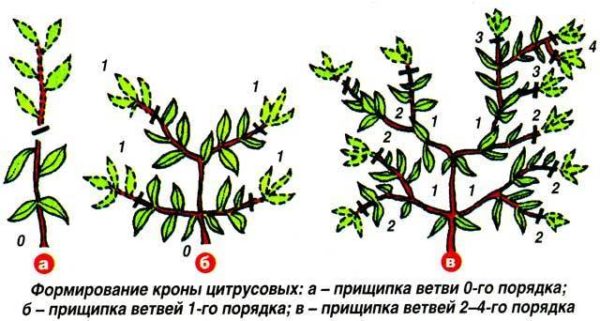
After pruning, the tree will send out lateral shoots of the first order. We leave three shoots that will be the skeletal branches of the future tangerine tree. All other sprouts need to be cut out.
- First order branches are left 20-25 cm long.
- Second order branches are 10 cm shorter
- The third and fourth orders are another 5 cm shorter.
It is better to pluck out all unnecessary shoots at the very beginning of growth, so that the tree does not waste its energy on them.
Tangerine grafting and why it is needed
A mandarin grown from a seed at home is called “wild” by citrus growers. It will take 10-15 years to wait for fruits from such a specimen. In order for the tangerine tree to begin to bear fruit faster, it is necessary to vaccinate. There are several methods of vaccination. We will look at budding and cleft grafting.
|
Methods for grafting a tangerine tree |
You can start grafting when the thickness of the plant stem reaches 5-7 cm. The best time for successful grafting is the beginning of active growth after a dormant period, when the tangerine grows shoots and young leaves.
For vaccination you will need:
- Tools – scalpel, blade, grafting knife, pruning shears.
- Strapping material – ribbons cut from latex gloves or polyethylene, electrical tape, fum tape.
- A cultivated branch from a fruit-bearing tangerine tree, matured with well-developed buds.
For successful vaccination it is important:
- use clean and sharp tools
- make straight cuts without jagged edges
- Do not touch the cut area with your hands
- the binding should be as tight as possible
Budding
The most reliable and widespread method is considered to be budding - grafting with a cultured bud. A couple of days before grafting, the tangerine should be well watered for better sap flow. In this case, the bark will be easier to separate from the wood. The place for grafting is chosen to be level, 5-10 cm from the ground.
- Cut off all the leaf blades from the cultivated branch, leaving only the petioles. It will be convenient to hold the cut bud by the petiole, and in the future it will serve as an indicator of the success of the grafting.
- Using a blade or scalpel, make a cut up to 1.5 cm from top to bottom under the bark. Cut off half of the cut bark, leaving a pocket at the bottom.
- From a cultivated branch, with an even movement, we cut off a bud with a shield of length approximately equal to the size of the cut.
- We hold the cut bud by the petiole and carefully insert it into the pocket, aligning the slices and bark as much as possible.
- Using bandaging material, tightly bandage the grafting site from bottom to top and then in the opposite direction.
- To create a microclimate, you can cover the plant with a transparent bag.
|
Mandarin budding |
Now all that remains is to observe the indicator petiole. If the petiole begins to turn black and dry out, then the grafting was not successful and you need to start all over again. If after a few days the petiole begins to gradually turn yellow, then the grafting was a success. In ten days the petiole will dry out and fall off.
It is important to remove all spilling buds on the rootstock so that they do not draw nutrition onto themselves until the graft takes root and begins to grow.
When a shoot begins to grow from the grafted bud, the stem above the graft can be cut off, leaving a stump of about 5 cm. It will be needed to fix the growing shoot in a vertical position.
Grafting into cleft
Another method is cleft grafting. The rootstock is our tangerine tree. The scion is a ripened twig from a fruiting citrus tree.
|
This is already an established graft. For such a grafting, it is better to take a scion cutting with 2-4 buds of approximately the same thickness as the rootstock. The thickness of the rootstock is 4-5 mm. |
How to graft into a cleft:
- Make an even cut on the stem of the rootstock with pruning shears at a height of about 10 cm from the ground, leaving only a couple of leaves for nutrition.
- Cut the resulting stump in the middle (split) to a depth of 2 cm.
- On the scion branch at the bottom, make cuts on both sides so that you get a wedge about 2 cm long.
- Insert the scion into the split on the rootstock, aligning the cuts well.
- Wrap the grafting site tightly with bandaging material from top to bottom and in the opposite direction.
- Cover the plant with a bag or plastic bottle to create a microclimate.
In order for the branch to take root, all awakening buds on the rootstock must be removed immediately, otherwise they will take nutrients for themselves.
After three to four weeks, the binding material is removed. It is better to cover the grafting site with garden varnish to protect the delicate fused tissues.
Varieties of tangerines for indoor growing
To grow fruit-bearing tangerines at home, breeders have developed low-growing ornamental varieties and hybrids. Here are several types of tangerines that are the most unpretentious and resistant to dry air and lack of lighting in the apartment.
- Unshiu grows up to 150 cm. The crown is spreading with thin drooping branches without thorns. The leaves are large and elongated. Flowering and fruiting for 3-4 years. The fruits are bright orange, flattened to 70 grams without seeds.The peel is easy to clean.
- Kovano-Vase small in stature up to 50 cm. The crown is compact with wide leathery leaves. Flowering and fruiting are already in 2-3 years. The fruits are light orange 50-70 grams with a thin peel that is easily separated from the pulp.
- Shiva-Mikan refers to dwarf varieties of tangerines. The crown is compact, densely leafy with elliptical dark green leaves. Fruiting in the third year. The fruits are small (25-30 grams) with a bright yellow peel.
Today, the market offers a huge number of varieties of tangerines suitable for indoor growing. According to experienced citrus growers, it is better for beginners to start with the most unpretentious species from the Unshiu group, adapted to home conditions.
You might be interested:
- Growing apricot from seed
- Growing roses from seeds at home
- How to grow strawberries from seeds at home
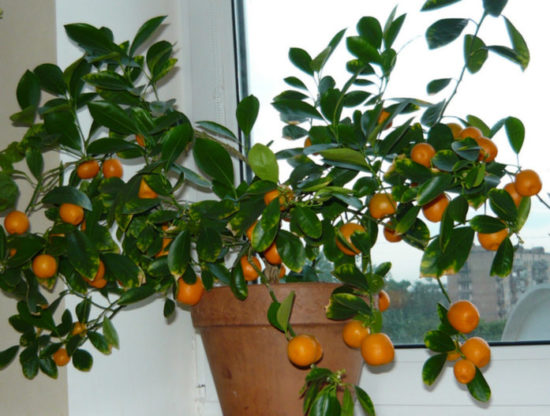
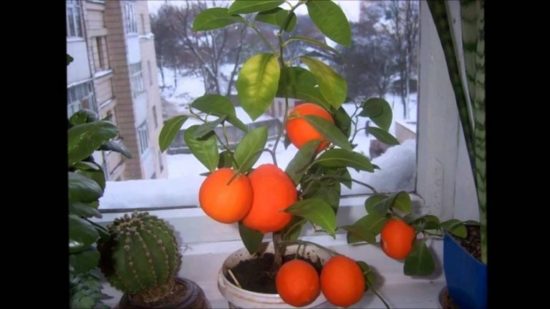
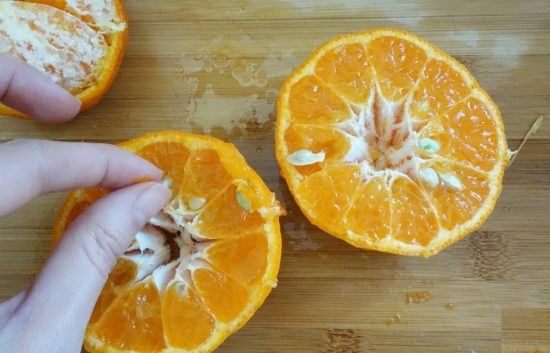
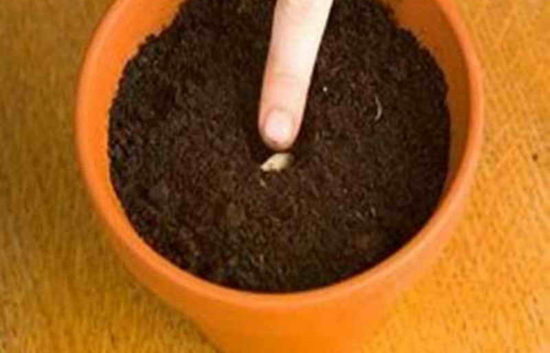
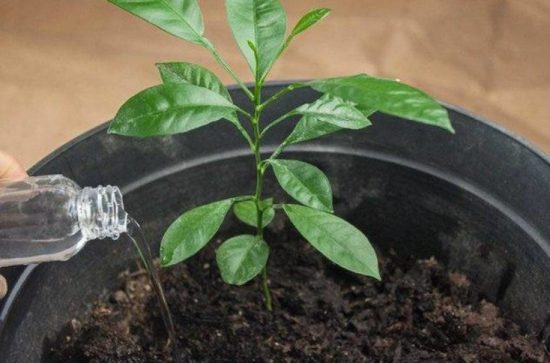

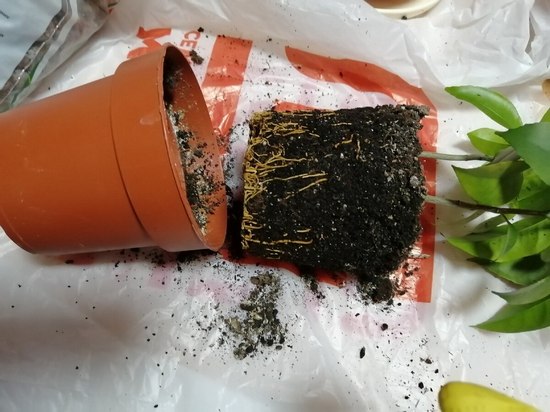
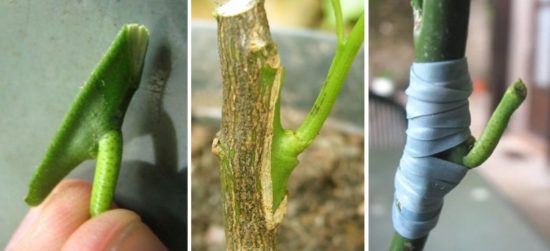
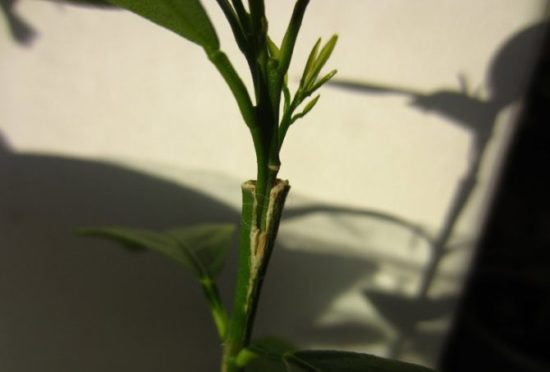


 (1 ratings, average: 4,00 out of 5)
(1 ratings, average: 4,00 out of 5) CUCUMBERS NEVER GET SICK, I'VE BEEN USING ONLY THIS FOR 40 YEARS! I SHARE A SECRET WITH YOU, CUCUMBERS ARE LIKE THE PICTURE!
CUCUMBERS NEVER GET SICK, I'VE BEEN USING ONLY THIS FOR 40 YEARS! I SHARE A SECRET WITH YOU, CUCUMBERS ARE LIKE THE PICTURE! You can dig a bucket of potatoes from each bush. Do you think these are fairy tales? Watch the video
You can dig a bucket of potatoes from each bush. Do you think these are fairy tales? Watch the video
 How our fellow gardeners work in Korea. There is a lot to learn and just fun to watch.
How our fellow gardeners work in Korea. There is a lot to learn and just fun to watch. Eye trainer. The author claims that with daily viewing, vision is restored. They don't charge money for views.
Eye trainer. The author claims that with daily viewing, vision is restored. They don't charge money for views. A 3-ingredient cake recipe in 30 minutes is better than Napoleon. Simple and very tasty.
A 3-ingredient cake recipe in 30 minutes is better than Napoleon. Simple and very tasty. Therapeutic exercises for cervical osteochondrosis. A complete set of exercises.
Therapeutic exercises for cervical osteochondrosis. A complete set of exercises. Which indoor plants match your zodiac sign?
Which indoor plants match your zodiac sign? What about them? Excursion to German dachas.
What about them? Excursion to German dachas.